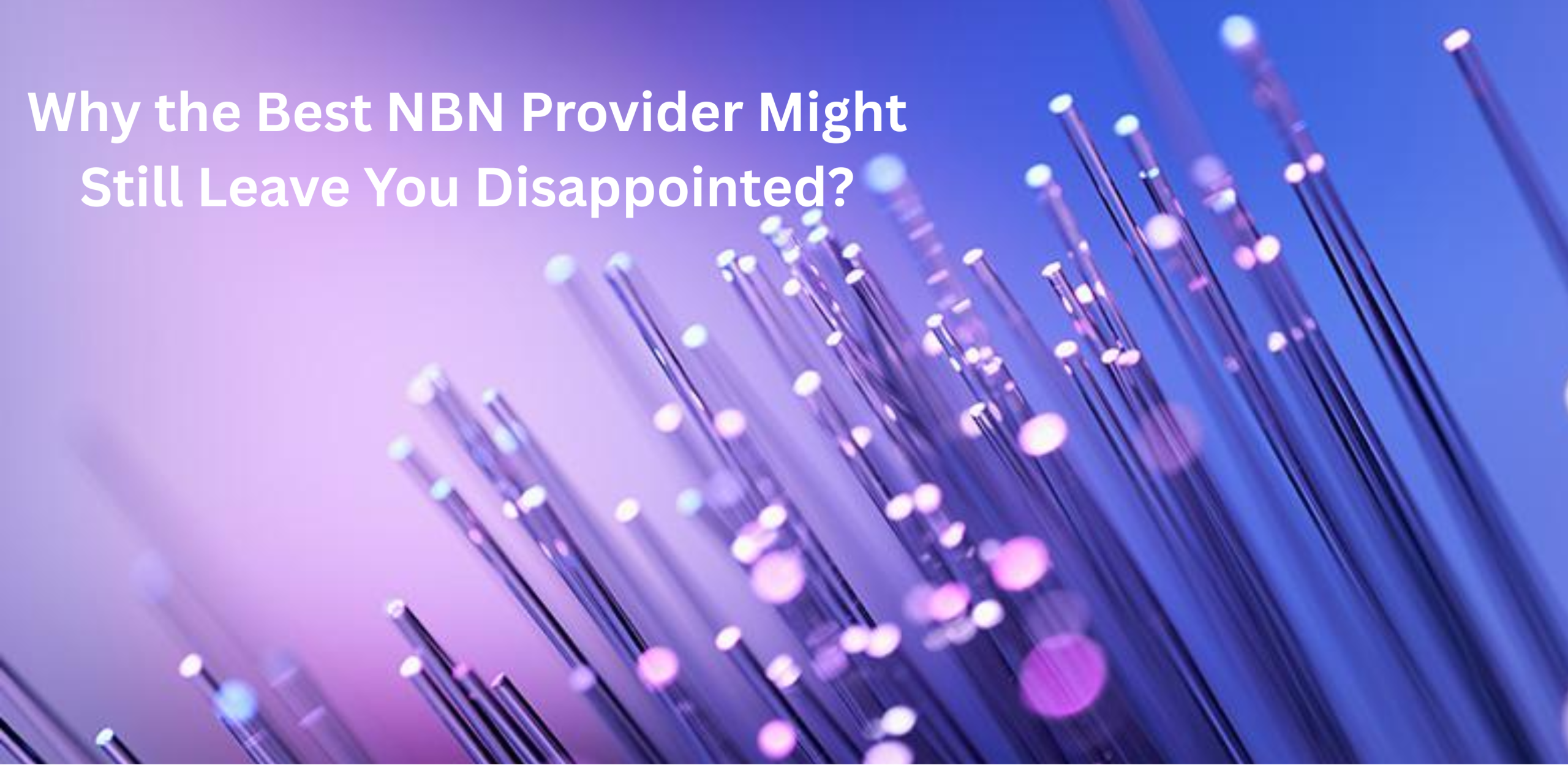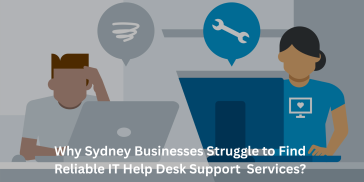In an age where reliable home internet is no longer a luxury but a necessity, many households in Melbourne and beyond do a lot of research before picking an ISP. You may type “isp providers Melbourne,” or search “isp provider near me,” or even ask “best home internet provider Melbourne.” You’ll probably also check “Best nbn provider in my area.” But here’s the surprising truth: even after all that checking, the provider that seems best on paper can still leave you frustrated.
In this article, I’ll walk you through why that happens the hidden pitfalls, expectations vs. reality, and how to minimize disappointment when choosing an NBN provider.
Promised Speeds vs. Real-World Speeds
One of the most common sources of frustration is the gap between the speeds a provider advertises and the speeds you actually experience. A plan might boast “up to 100 Mbps” or “up to 250 Mbps,” but real world throughput often falls short.
- Network congestion: During peak hours (evenings, weekends), many users in your neighbourhood might be online, causing slower speeds.
- Internal wiring: The quality of the cable from the NBN node to your home—and even the internal wiring inside your house—can degrade signal, especially in older buildings.
- Router hardware: Some routers simply can’t handle the traffic; a provider may give you a basic model that struggles under load.
- WiFi interference: Your neighbour’s WiFi, thick walls, appliances, or even a microwave could interfere with wireless signals.
Thus, though you might have chosen from among the top isp providers in Melbourne, your personal experience might fall short of expectations.
Local Infrastructure & Technology Type
When you search for “nbn providers in my area,” it’s important you also check which NBN technology is available where you live: FTTP, FTTN, HFC, FTTC, or fixed wireless. Each has different performance characteristics:
- FTTP (Fiber to the Premises) is the gold standard, delivering consistently high speeds.
- FTTN (Fiber to the Node) uses existing copper lines for the last leg; performance degrades over distance.
- HFC (Hybrid Fibre-Coaxial) shares bandwidth with neighbourhood users, so it can get congested.
- Fixed wireless is useful in less accessible areas—but weather or line-of-sight issues can affect reliability.
Even if an ISP advertises top speeds, if the underlying infrastructure in your suburb is FTTN or shared HFC, your real experience may be limited. That’s why someone looking up “isp provider near me” might find several options, but be disappointed when none deliver consistent speeds.
Overselling Plans & Fine Print
Sales and marketing departments are skilled at making plans look attractive. But often the catch is in the small print:
- “Up to” vs guaranteed minimums: Many plans will say “up to” a certain speed—that’s not a guarantee.
- Peak hour throttling: Some providers may slow down your speeds during busy times, or deprioritize your traffic.
- Data caps or fair use policies: While many NBN plans are “unlimited,” some ISPs enforce fair-use policies that can slow you down after heavy usage.
- Exclusions or surcharges: Some charges (e.g. setup, modem rental, line fees) may be hidden until you reach the checkout.
When you hunt for the “best home internet provider Melbourne,” it’s easy to be dazzled by bold numbers unless you dig deeper into the contract.
Customer Service & Technical Support
Even if your connection is perfect, you might still be let down by poor service. You may call up for help during an outage or to chase a speed issue and find:
- Long wait times, or call centres overseas
- Technicians who are slow to respond
- Support that passes you around multiple departments
- Delays in resolving infrastructure faults (especially those outside your property)
A bad support experience can turn what should have been an easy fix into weeks of frustration so your ISP choice is only as good as its support system.
Installation Delays & Hidden Costs
You might pick a provider based on research, but then installation gets delayed. Common issues include:
- Time lag in scheduling a technician
- Needing additional wiring, conduit work, or extensions
- Hidden charges for extra installation tasks
- Delays from neighbours or shared access points
When you search “isp providers Melbourne” or “isp provider near me,” the advertised delivery times may assume ideal conditions that rarely match real life.
Overloading Local Nodes
Even with the right technology and a decent plan, if your local node is overloaded, your experience will suffer. In busy suburbs, many households share the same NBN node or coaxial segment. If many neighbors stream, game, upload to cloud, or run video calls, that creates contention that slows everyone’s connection.
So even though you signed up thinking you have the “best home internet provider Melbourne,” you may suffer during peak hours simply because of local demand.
Mismatch Between Needs and Plan
Sometimes disappointment comes not from the provider, but from choosing the wrong plan. You might overestimate your usage or underestimate it. You may pick a low-cost plan that’s fine for browsing, but stumbles when several devices stream 4K, work from home, game, and back up large files at once.
Before choosing, think about:
- How many people/devices will be online simultaneously
- Whether you’ll use high-bandwidth services like video conferencing or cloud backups
- Whether you require upload speed (e.g. for streaming, gaming, uploading content)
- Whether you’ll run smart home devices, CCTV cameras, etc.
Sometimes it’s not the ISP that disappoints—it’s the plan you picked.
ISP Switching Friction
When your current ISP underdelivers, you might consider switching. But the process can be painful:
- Contract lock-ins or early termination fees
- Downtime during the switch
- Loss of email addresses, settings, or special configurations
- Hassles moving custom setups (port forwarding, static IPs, VPNs)
That discourages some customers from switching even when they’re unhappy. So even when you searched “nbn providers in my area” and saw better options, practical difficulties may prevent you from acting.
Expectations vs Reality in Marketing
Consumers often fall victim to marketing hype. Adverts show streaming movies in 8K, plunge-shot drone footage, or glowing speed numbers, creating unrealistic expectations. When reality sets in, disappointment often feels like it’s the provider’s fault—even if infrastructure, home layout, or device limitations play a part.
How to Minimise Disappointment: A Checklist
Knowing all these pitfalls, how do you make a better choice? Below is a checklist to help you choose an ISP more intelligently—whether you’re searching “isp providers Melbourne,” “isp provider near me,” or “best home internet provider Melbourne.”
- Check technology type — Use the NBN site or a third-party map to see whether your address is FTTP, FTTN, HFC, etc.
- Look for real speed tests — Seek provider reviews or forums for actual measured speeds in your suburb.
- Read contract fine print — Look for terms like “peak time slowdown,” “fair use,” or “contended nodes.”
- Ask about support & SLAs — What is guaranteed uptime, support response time, and compensation for downtime?
- Choose a reputable provider with local presence — Even though many searches begin with “isp provider near me,” also check how local providers are rated for service.
- Pick a plan that matches your usage — If you have 4K streaming, multiple users, frequent uploads, don’t go for the lowest tier.
- Ask for installation cost estimates — Don’t assume the installer will simply “plug in”; get clarity up front on any extra work.
- Monitor performance — After installation, run speed tests at different times. If consistently underperforming, raise a support ticket early.
- Stay flexible — Avoid long lock-in contracts if possible, or ensure exit terms are reasonable.
Real World Example: A Melbourne Suburb Story
Let’s say a family in Carlton North searches “nbn providers in my area.” They see several isp providers Melbourne, including big names and smaller local ones. One of them advertises “500 Mbps unlimited” and seems perfect, so they pick it.
A few weeks later:
- Downloads at 7 pm are only 120 Mbps
- Uploads (needed for their kid’s online school) struggle
- They call support — long hold times, technician visits, excuses the local node is doing heavy traffic
- They learn their area uses FTTN and too many houses share the same node
- They also find hidden surcharges and that their modem is underpowered
Despite choosing what seemed like the “best home internet provider Melbourne,” they end up disappointed.
If they had checked first:
- Whether that suburb is serviced via FTTN or FTTP
- Community forums or local speed tests
- Which ISPs in that area consistently deliver
- Whether there were reviews about poor support
They might have selected a more stable alternative possibly a boutique ISP known for reliability in that postcode.
Final Thoughts
When people type “best home internet provider Melbourne” or “isp provider near me,” they are looking for certainty. And when they type “nbn providers in my area,” they hope to find something that works flawlessly. But reality is messy: infrastructure constraints, marketing promises, local congestion, support issues, and plan mismatches all conspire to disappoint even the most careful consumer.
Choosing the right ISP is not just about the biggest number you see in advertising. It’s about matching your location to realistic infrastructure, making sure the provider is honest and responsive, and picking a plan suited to your actual usage.
At CSPro, as a managed service & NBN solutions provider, we understand that the “best” provider on paper can still leave users experience if the ground reality doesn’t support it. That’s why in addition to helping businesses with NBN internet services, we encourage all consumers to consider the full spectrum from tech type to contract stipulations.
If you’re in Melbourne and trying to make sense of the maze of ISP options especially as you search for “isp providers Melbourne” or “isp provider near me” feel free to reach out. We can help you assess whether the “best” provider really is the best for you.




